This last week I took Grace out on the water twice after a ton of winter projects. The first time was a beautiful, warm day with wind and real sailing. The second time was the rainiest April day on record in 22 years in Seattle, and turned out quite a bit different.
I have been working on a bunch of projects and changes on Grace this winter, and I wanted to get out on the water and test the changes, do some mini sea-trials on the new equipment, and actually sail – what a concept! When I saw that Monday was going to have 65 degree temperatures and light winds, I took the opportunity to get out on the water. I ended up doing this single handed, which was also a nice treat – the last 30 or so trips I can think of on Grace always included other crew – sometimes its nice to just be alone with only the sound of the water and wind!
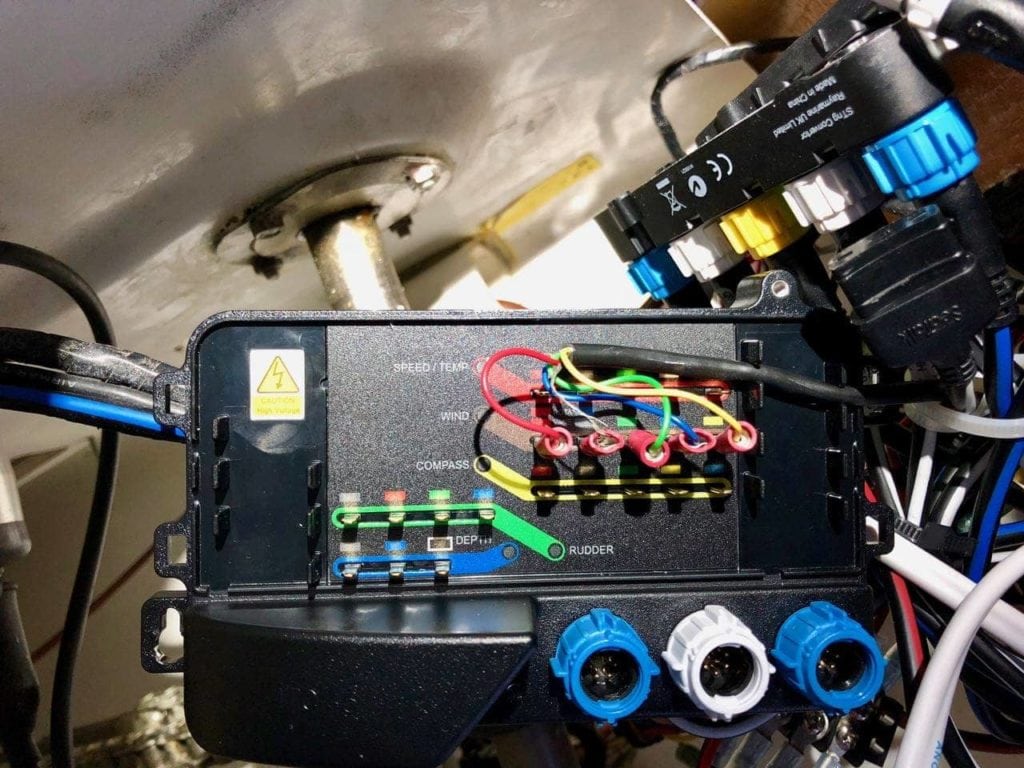
After a quick stop at the fuel dock to top off the tank, I was out in Elliott Bay. Right away I calibrated my wind instrument after having added the ITC-5 earlier this winter. That was a simple procedure of using one of my i70s displays to choose to setup a transducer, and following the instructions. I had to do a slow circle a couple of times, and then head straight into the wind to set the angle. While the calibration went well, I have been concerned for a while about my mast mounted transducer. I have seen the anemometer cups not spinning in light air when other boats near me are spinning, and weird blips of 0 knot speeds when I know there is at least some. I am wondering if it needs to be oiled or cleaned, or if a bird did something to it.
I already need to find someone to go up and fix my anchor light and VHF antenna connector. The VHF antenna connector looks to be crimped on, and I have terrible issues with transmitting on VHF. In addition, my anchor light just stopped working within the last couple of months, and actually trips the circuit breaker when you turn it on, so there might be more involved there. Unfortunately, I do not do heights in any way, so I need to find someone I can bribe to get up there and help with those projects.
The second thing I noticed is that the paddlewheel on my Airmar DST110 depth/speed/temp sensor appears to have growth on it again. For the entire trip I never saw a reading other than zero for Speed Through Water. I can’t wait until the new Airmar UDST 800 is more available – I would love to replace what I currently have with something ultrasonic.
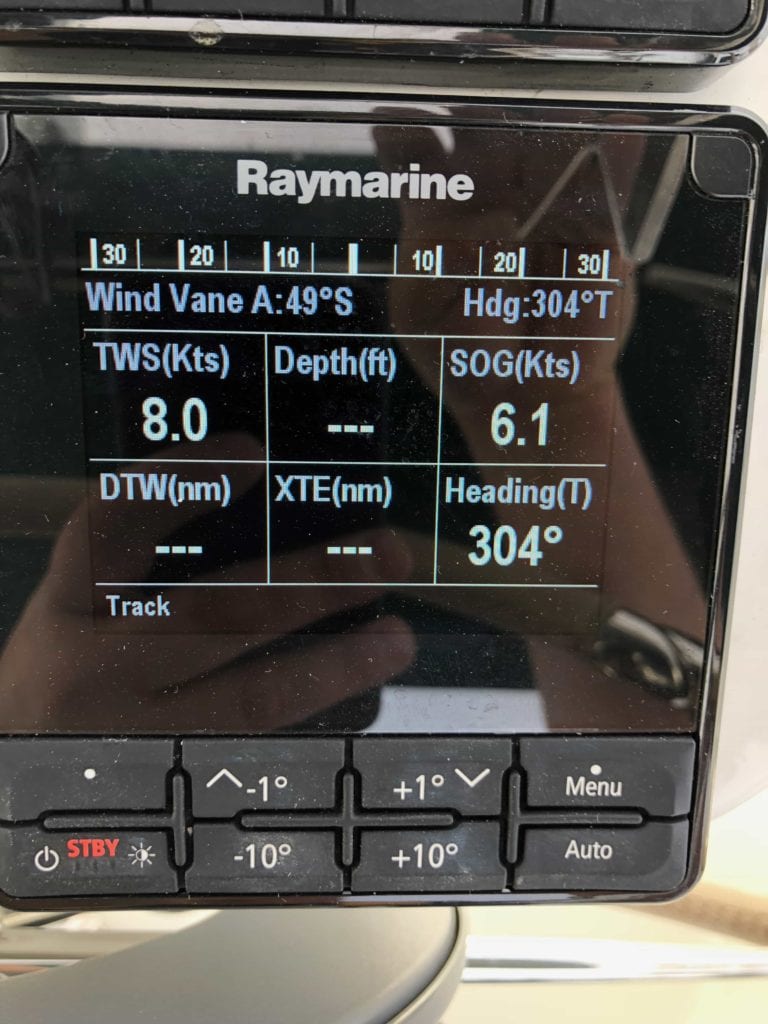
Performance on the water was really good under sail. Grace has always done well in light air, but today was pretty awesome. With only 8 knots of wind, I was moving along at 6.1 knots SOG. Would have been nice to have that STW sensor about now… I am guessing my wind sensor is a bit off still though, as doing 6 knots with only 8 knots of wind is quite impressive.
I guess I couldn’t complain too much. There was hardly any wave action, and plenty of great wind and sun. Anything about 60 degrees F around here is considered shorts weather, so I was pretty happy.
Here’s a calming video of Grace moving along at 6 knots under sail – nothing but water and wind noises, and a beautiful view of the Seattle skyline.
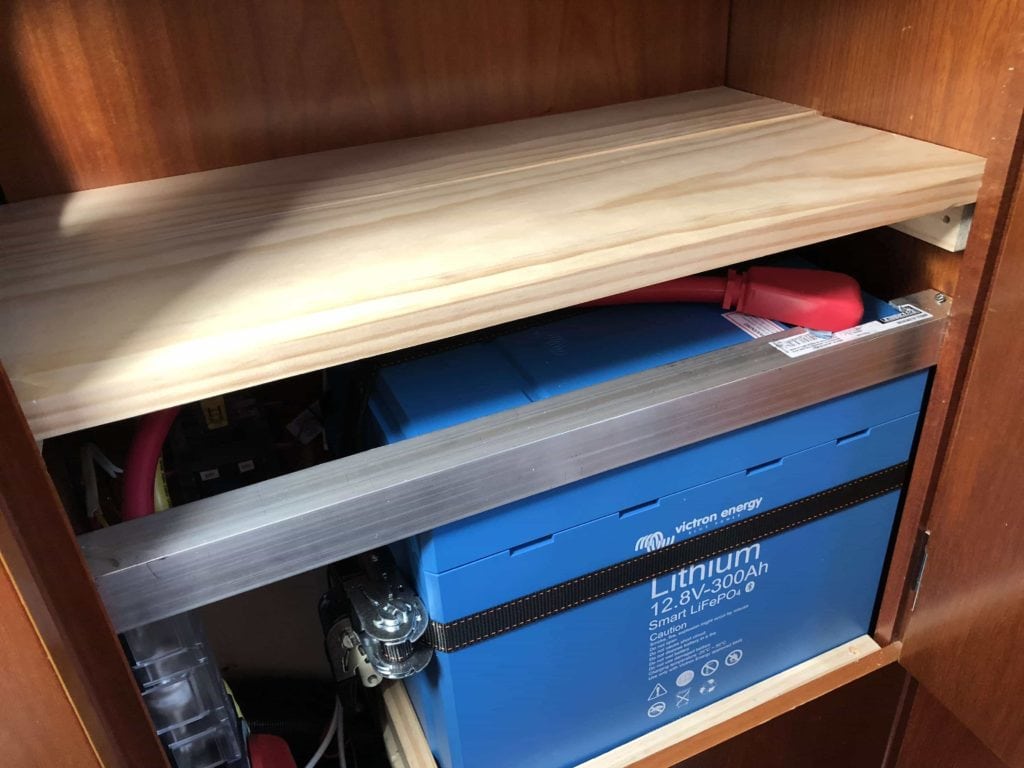
Victron 300ah LiFePo4 Smart Battery
I was testing a bunch of new changes and adjustments, as well as projects that I’ve completed recently. The big ones included Raymarine 3.4, the ITC-5, new nav panel, PowerPod, new boat monitoring systems, new Intel NUC boat computer, and most importantly, a change to LiFePO4 batteries and a new Victron power system. That last one was the biggest change, and I have a series of articles on the whole implementation journey.
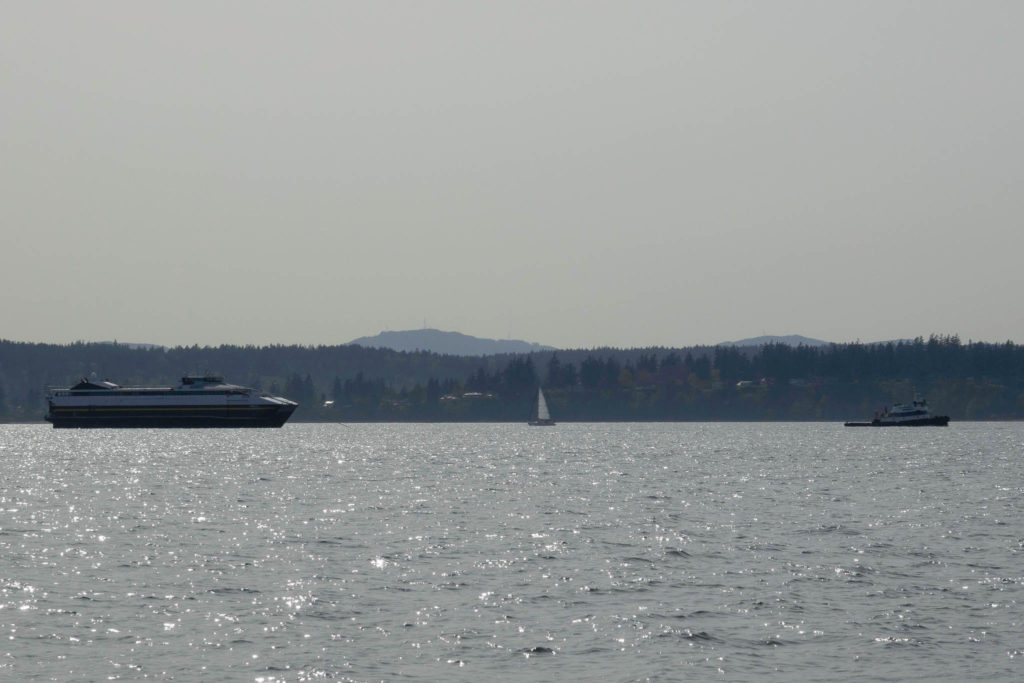
We have a lot of tugs in the area that go back and forth, in and out of waterways, and up and down the channel. While I was sailing back towards the marina, I heard a tug pulling a “dead ship” which is the first time I’ve heard that nomenclature. Sure enough, I could see it was pulling what looked like a catamaran style ferry.
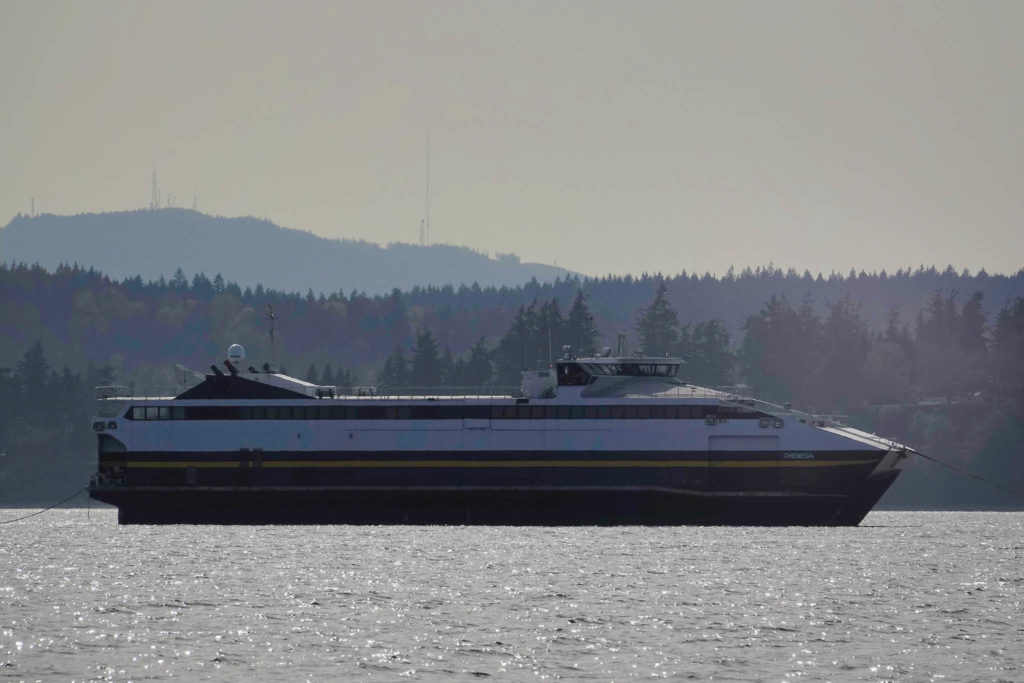
Using my favorite Sony RX-10 MK3 super zoom camera, I was able to figure out that this was the Chenega, and as the destination being reported was Alaska, I assumed that it was being brought out of decommissioning and back to life on the Alaska Marine Highway.
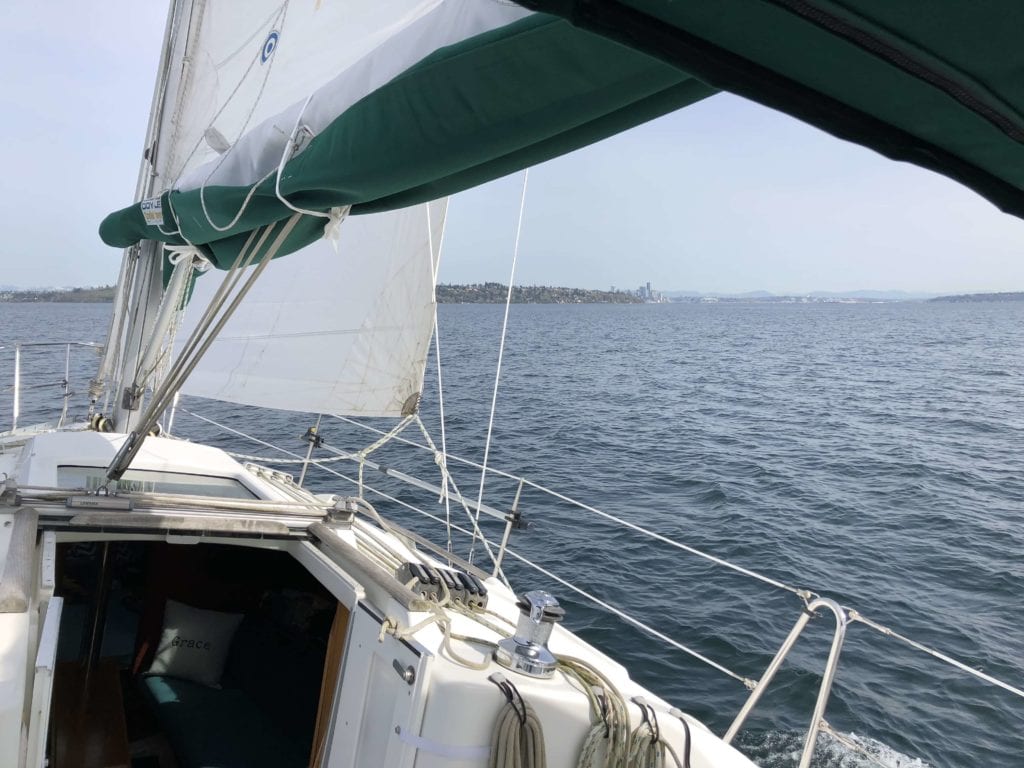
Eventually I headed home after testing out everything I needed to, and having a very relaxing few hours on the water. I didn’t push my luck and stay out until sunset, although it was a beautiful one. I figured for the first outing after so many changes, and doing it singlehanded as well, it was better to end on a high note.
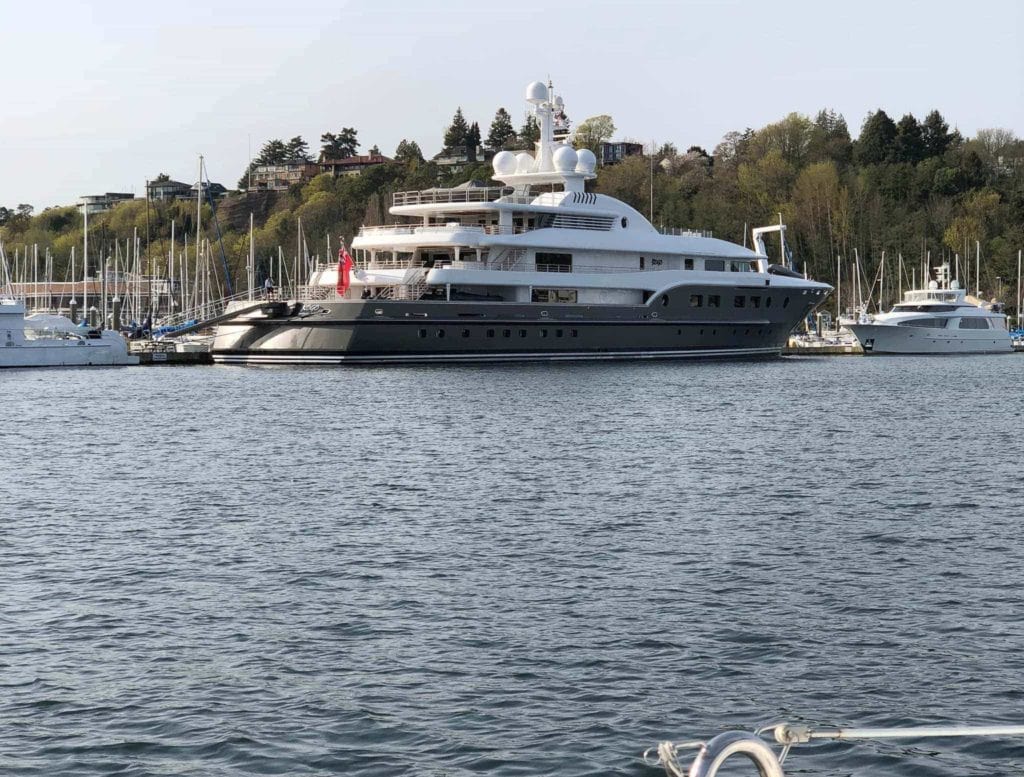
Just rounding the breakwater at Elliott Bay Marina, I got a good look at Kogo, a beautiful 235′ yacht that has been moored at the marina for a few days. She appears to have gotten a new paint job, but is the same boat as listed above – 12 guests, 7 cabins, 21 crew. I wonder if her network is as big as mine?
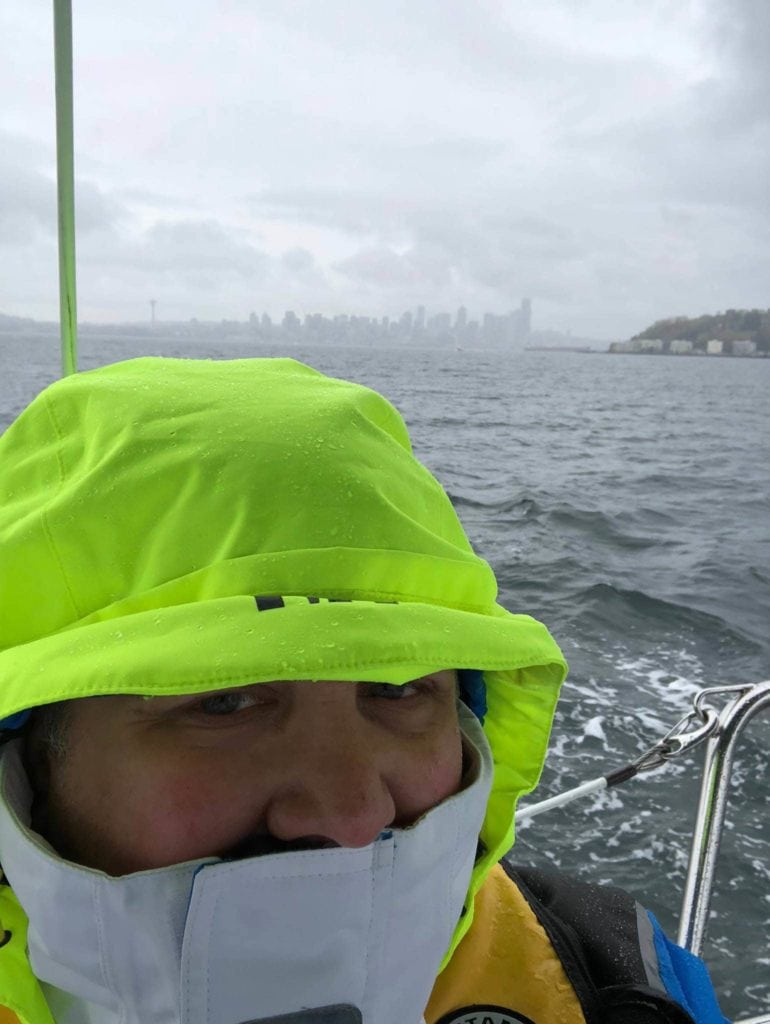
The next time I went out was considerably different weather. Even with pouring rain, I wanted to get away from the dock, and attempt an overnight at nearby Blake Island. The wind wasn’t supposed to be that bad, and we had just come off of three days of 20-30 knot winds with gale and small craft warnings, so I was ready to go. I again was heading out single handed – for some reason no one was interested in rainy April boat trips…
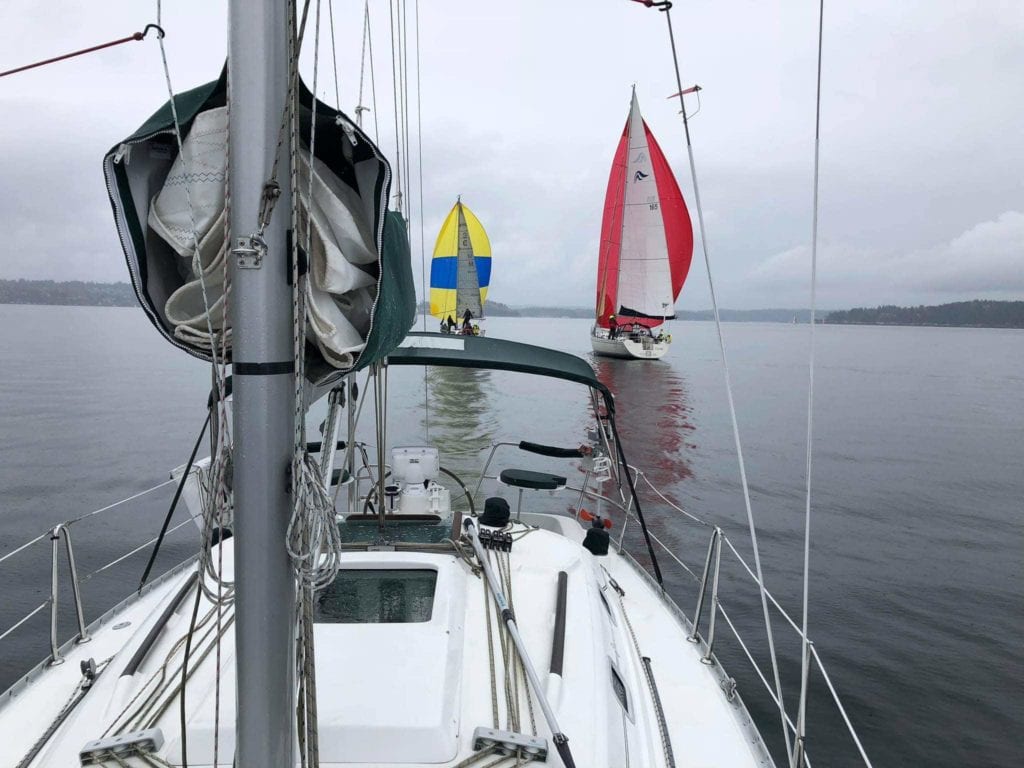
The trip from Elliott Bay Marina to Blake Island was uneventful, and mostly just rain. Visibility was good, and other than a bit of a snafu catching a mooring ball, I was happy with how calm things were. I had grabbed the furthest west mooring ball of three on the north side of the island. South winds were forecast for that evening, and this seemed like a good spot to avoid them.
While I was there, a couple of boats in a race slid by very slowly with only a few feet separating everyone. They asked why I wasn’t racing too!
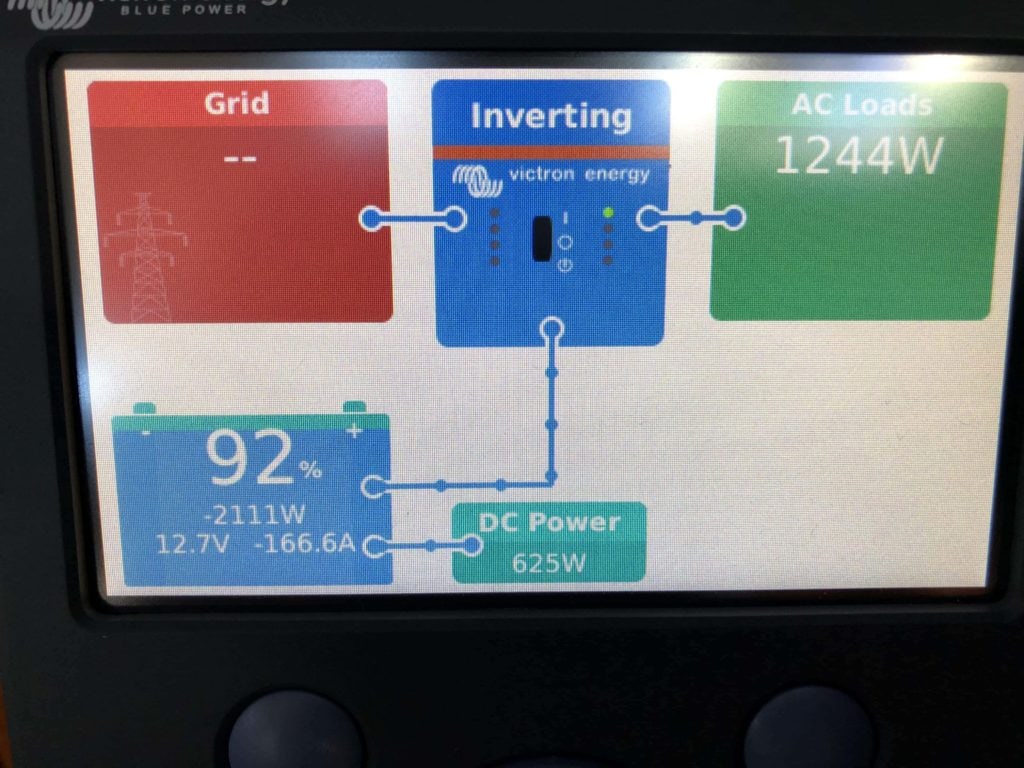
Victron inverter inverting while I am using my Nespresso coffee machine
I spent about 2 hours down below testing various systems, making coffee on the new inverter, and using the boat as I normally would on a mooring/anchor. I tried to troubleshoot the anchor light that kept tripping, but exhausted my electrical testing both at the panel and at the mast step. I think someone will still need to be bribed to go up to the top…
I had hoped to break out my OpenROV Trident underwater drone and do some exploring around my mooring, but the rain had other ideas.
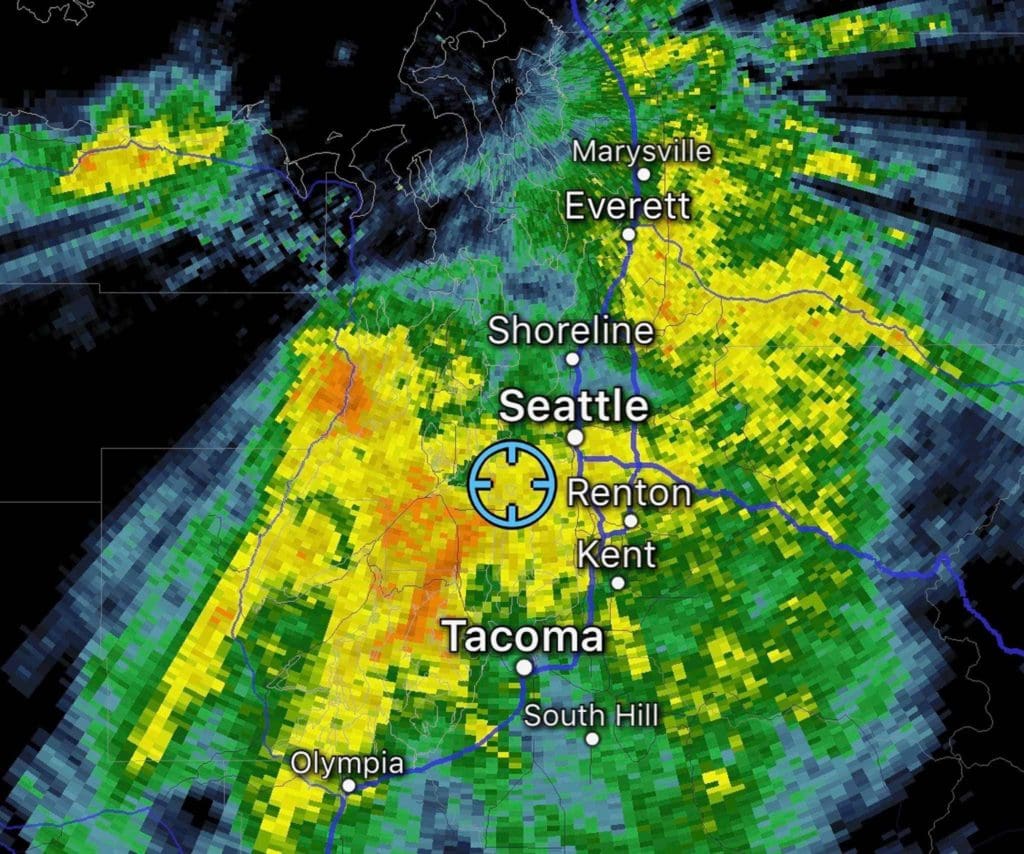
It really started raining, and having grown up in Seattle and lived here most of my life, I think I’m qualified to say it was a ton of rain. I also started getting a bit sick from the boat motion. I get motion sick very easily, and rolling waves from random directions at different intervals not my friend. I had seen similar conditions at Blake many times before, mainly from passing ships, but they usually subsided.
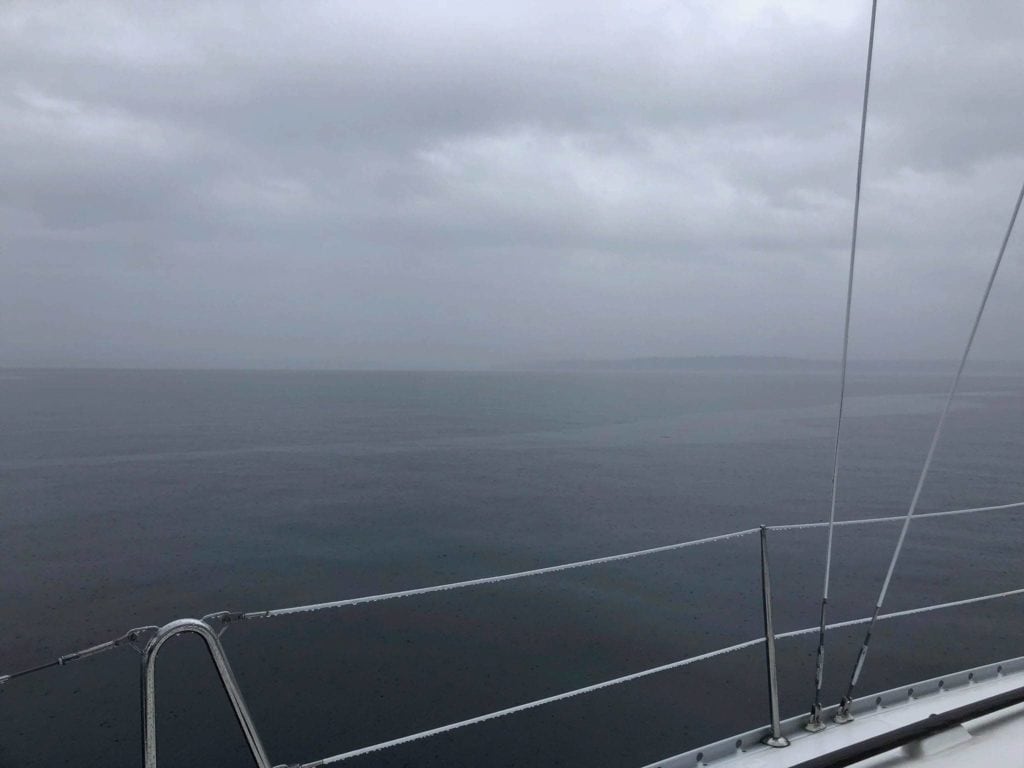
Going outside always helps, and it did here for a bit, but soon visibility closed in to less than a mile, and Seattle, which is supposed to be on the horizon here, disappeared.
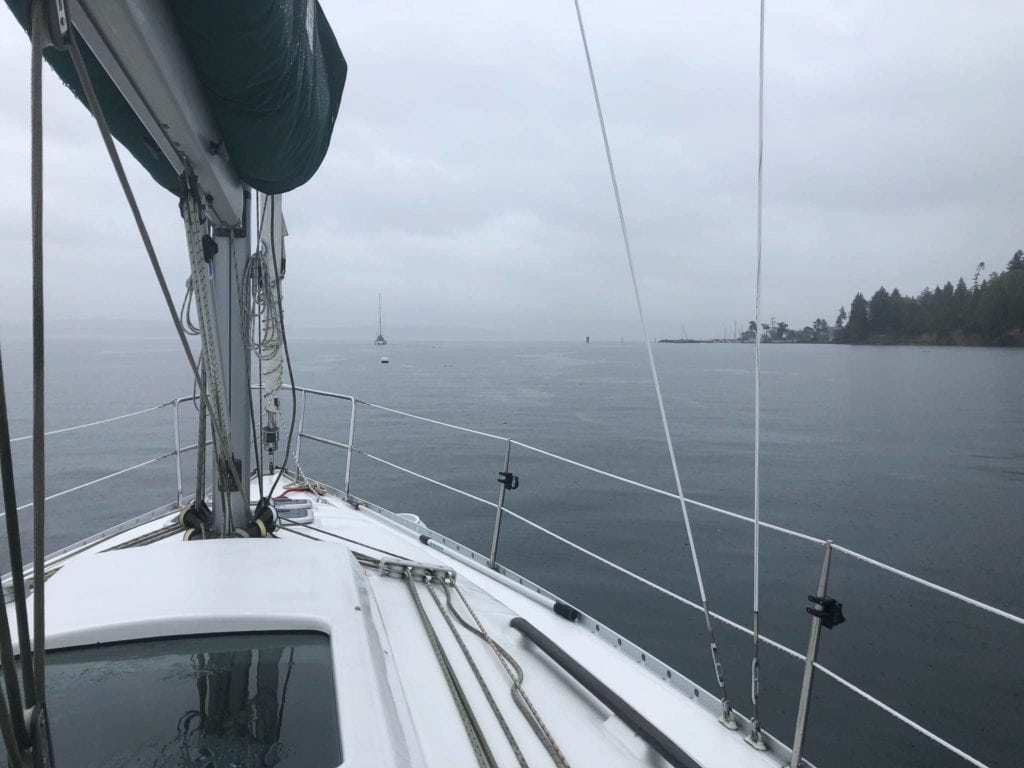
The wave action was getting really bad now – hard to see in photos. Even neighboring boats were flopping around and making lots of noise. They both left and went into the marina, which I wanted to avoid as I wanted the solitude of a mooring.
However, I couldn’t take it much longer before I would be incapacitated and sickly below, so I decided to head home.
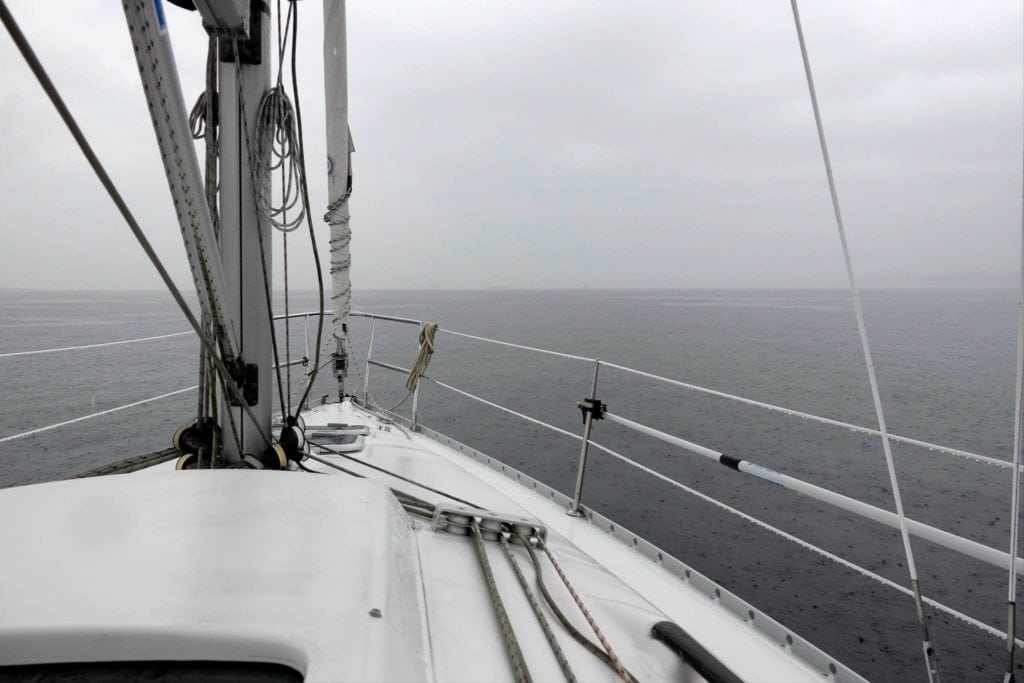
Visibility had gotten worse – I had never seen it this bad without it being fog. This was purely low rain clouds with torrents of rain. The picture does not do it justice, but if you click and zoom in you will see the massive amount of raindrop patterns on the water. What you don’t see is the ferry and tug on the horizon, and the 3 other ferries moving around.
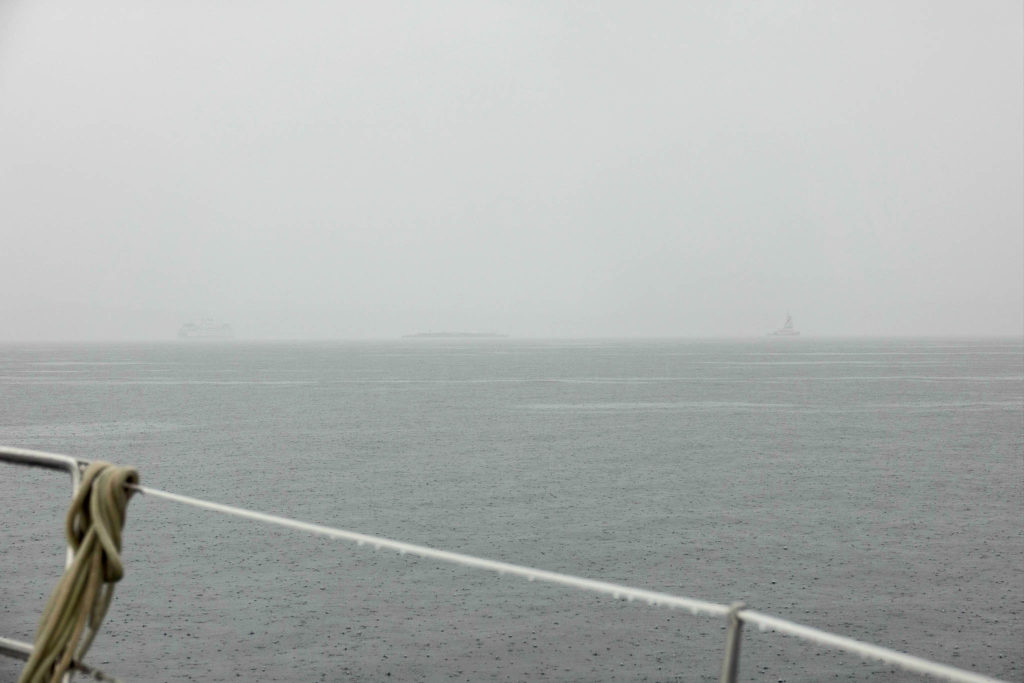
Here’s a closer photo – you can see a ferry on the left, barge in the middle, and tug on the right. These guys are less than a mile away.
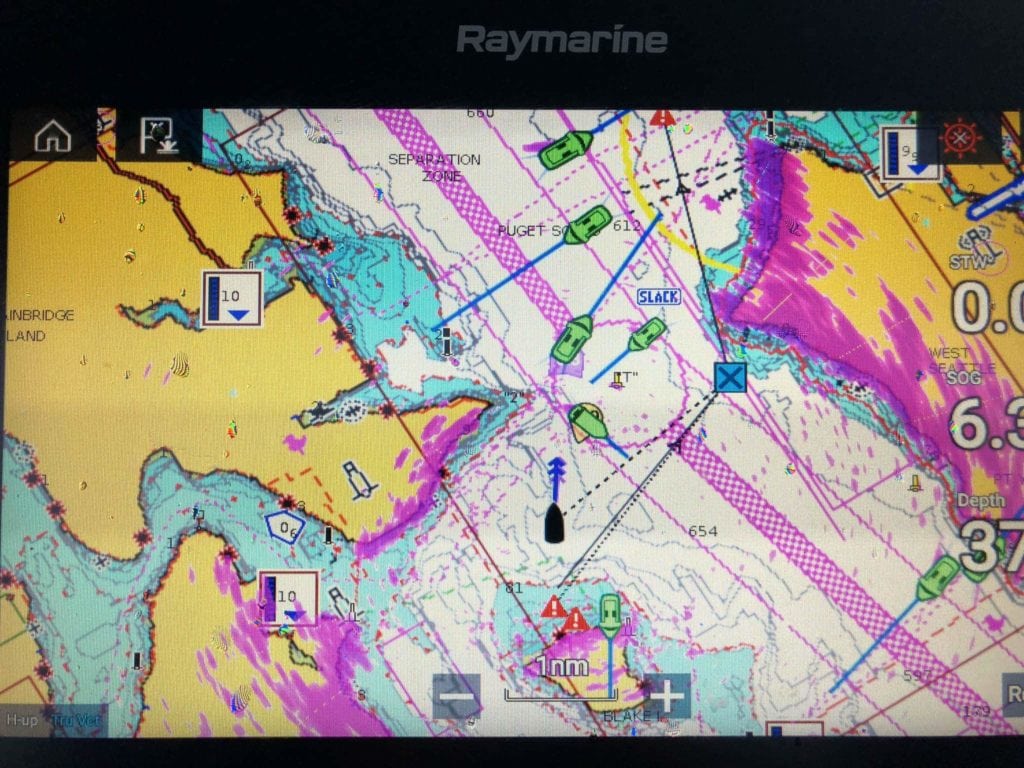
Radar did not help, although I had it on from the second I started moving. AIS was the only thing that allowed me to see where everyone was going, and that a local tourist boat was threading between the buoy, tug, and ferries.
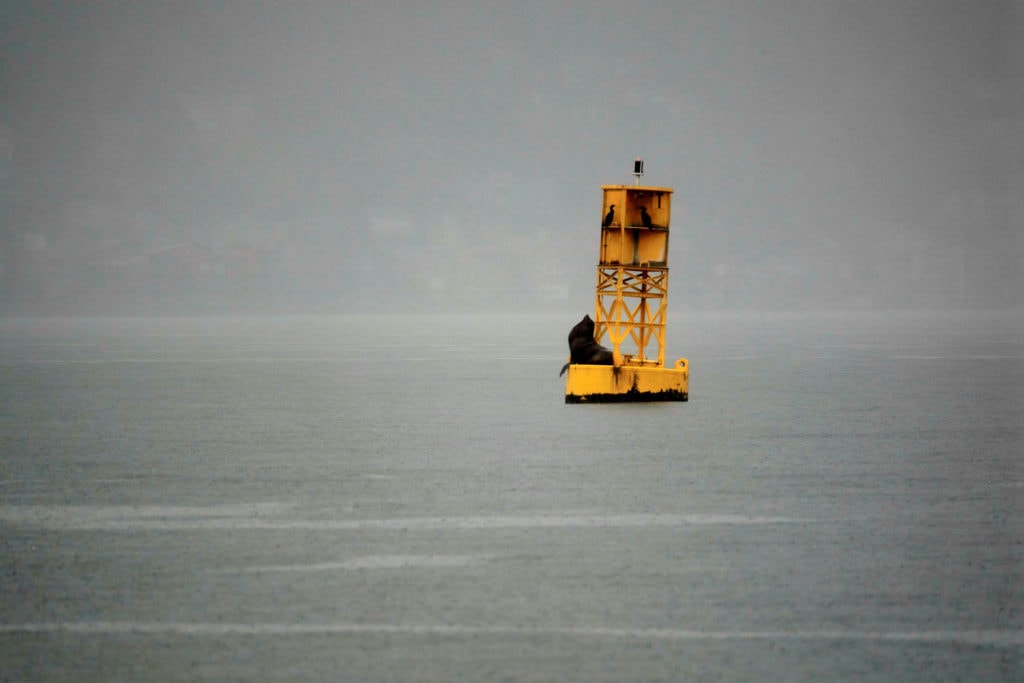
The sea lion appeared to be worshipping the rain, although the cormorants seemed indifferent.
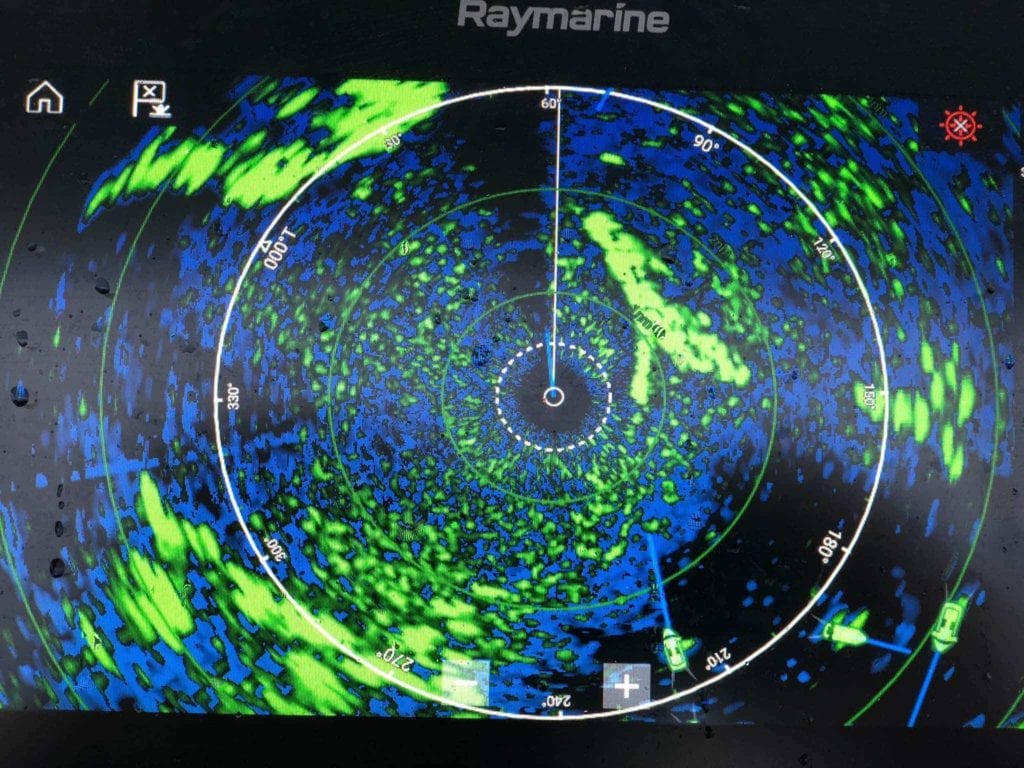
It was a mildly stressful voyage back to the marina mainly due to visibility. There were very little waves, slack tide, but deluges of rain. The frustrating thing was that I could never get the radar to tune out the rain enough without losing everything else. I am not an expert with a radar by far, and it is one of the things I need to learn a lot more about, but I should have been able to get a better result.
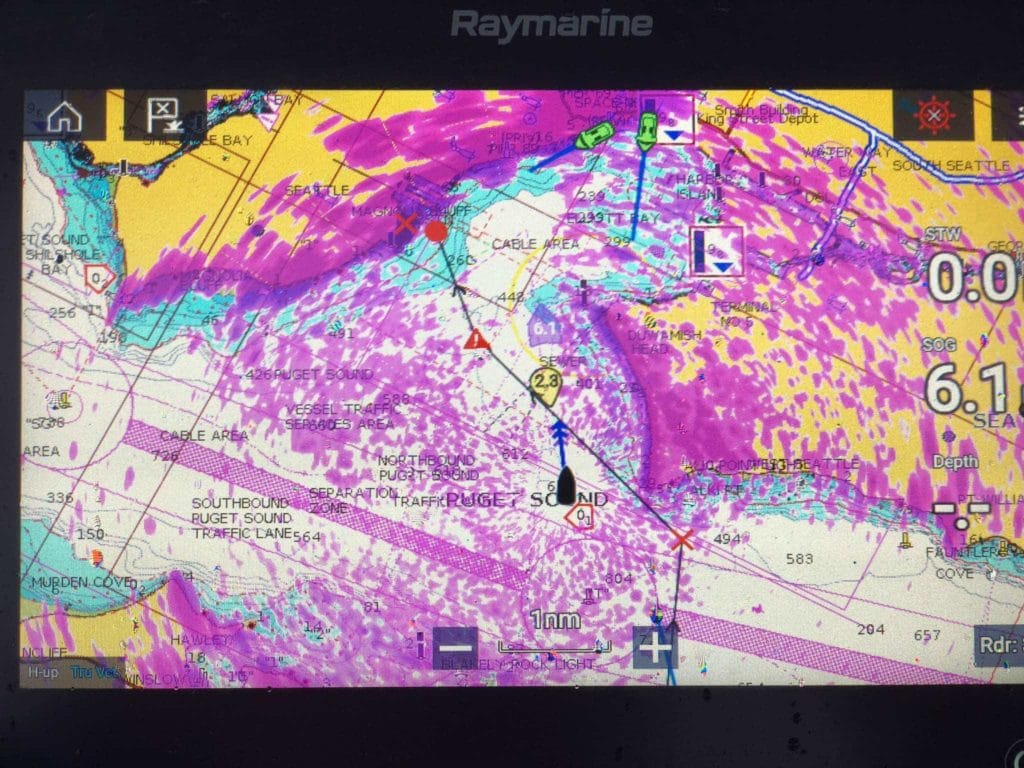
Overlays on the chart page are almost useless at this point. As a result, I didn’t rely on the radar at all, so I used AIS as much as I could, and then listened and watched very closely as I got closer to the higher traffic areas of Elliott Bay.
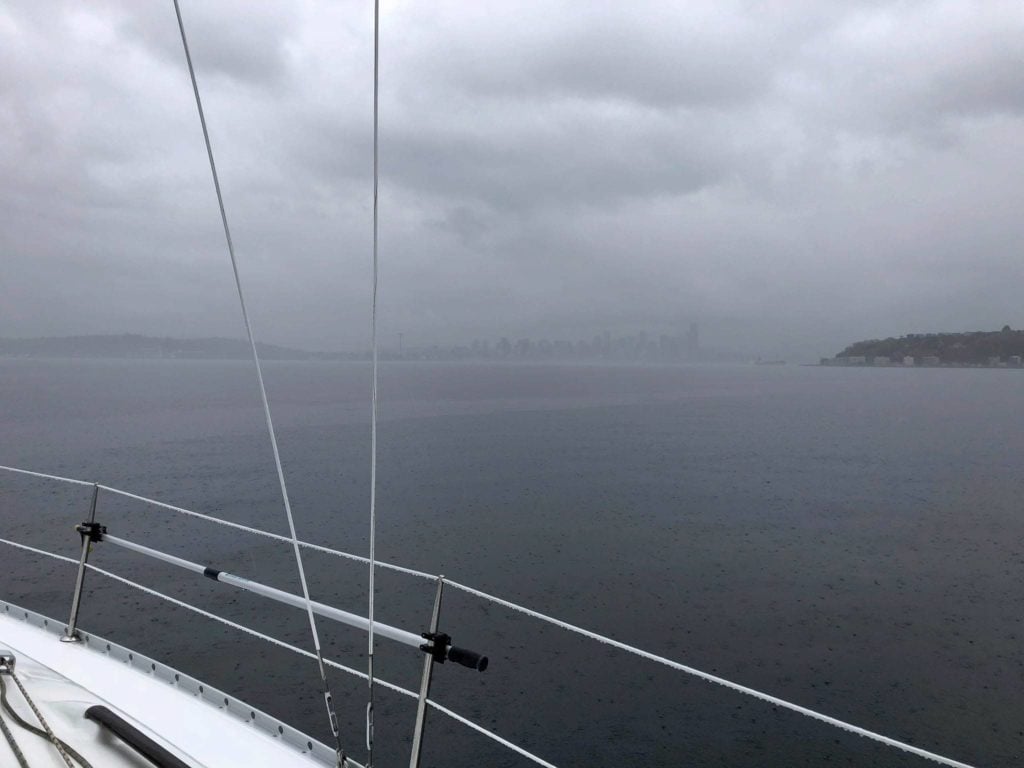
Soon Seattle started appearing through the gloom. I timed my crossing of 3 ferry routes from listening to my favorite VTS channel on the VHF and some AIS monitoring, and made it to the marina in pretty quick time.
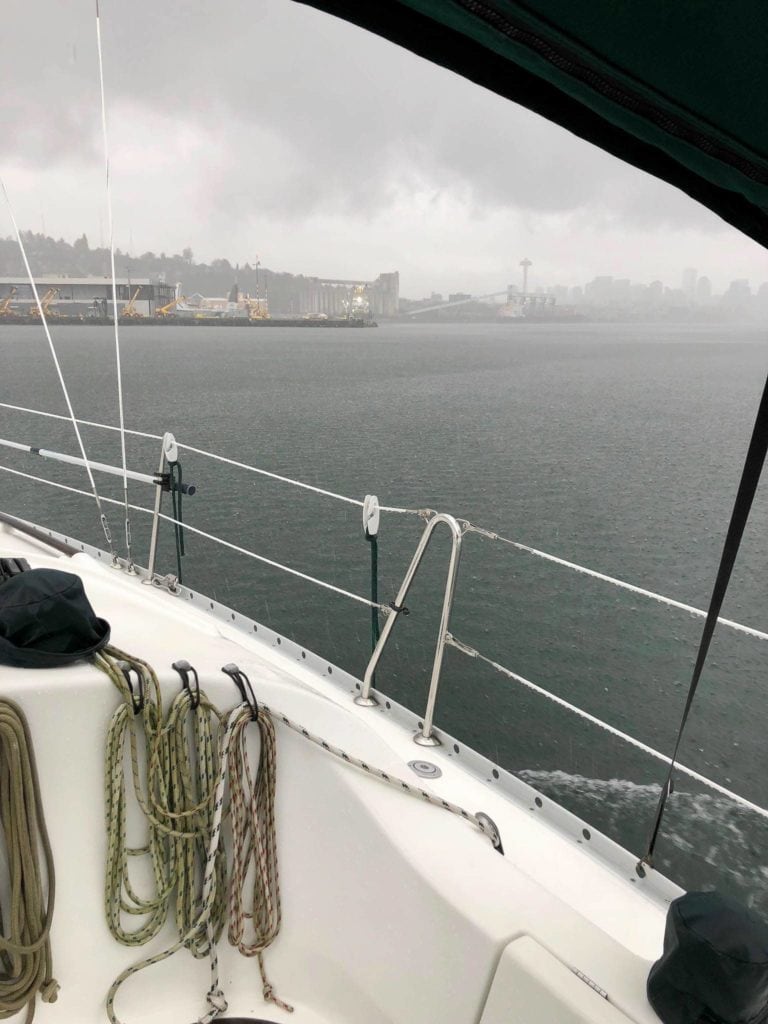
Right before I turned into the marina, the most intense rain showers I have ever seen came through. I slowed down and just watched. It was coming straight down, so I didn’t get wet, but it was an impressive amount of water. Raindrop patterns on the almost calm sea was amazing, and impossible to catch with a camera. We did actually break a record for the amount of rain that day.
In contrast to the beautiful sailing video at the top of this post, here’s one of the torrential downpour as I neared the marina.
I’m happy with the two test trips, although I would have liked an overnight somewhere. The only major problems I found are the stupid paddle wheel being gunked up (again), and continued issues with the anchor light and VHF. Everything else seems to have settled in nicely and should provide even more fun while on the water this year.
Archived Comments
These are read only comments from the old system. Scroll down to participate in SeaBits Discussions, our new interactive forum attached to each article.
David Geller
April 18, 2018 at 10:43 pm
I thought the Raymarine radar has a rain mode with an adjustable scale that lets you tune in and out the amount of noise filtering you want to do? Mine does that and we’ve had great results, even in heavy rain and choppy seas.
- Steve Mitchell
April 19, 2018 at 10:38 pm
It does have one, and I was trying to use it on Saturday during the torrential downpour. There’s a screen shot from above showing me adjusting the rain parameter and it helped a little, but it eventually started losing real targets as well. Perhaps it is the sheer amount of rain that was coming down?
David Geller
April 18, 2018 at 11:05 pm
Seems to work well! See you on Marine Traffic!
- Steve Mitchell
April 19, 2018 at 3:09 am
Ah good! I am also a mobile station on Marine Traffic, Boat Beacon, AIS Hub, and a few others. That is the AMEC gathering the data and my on board computer sending it up to those services.

